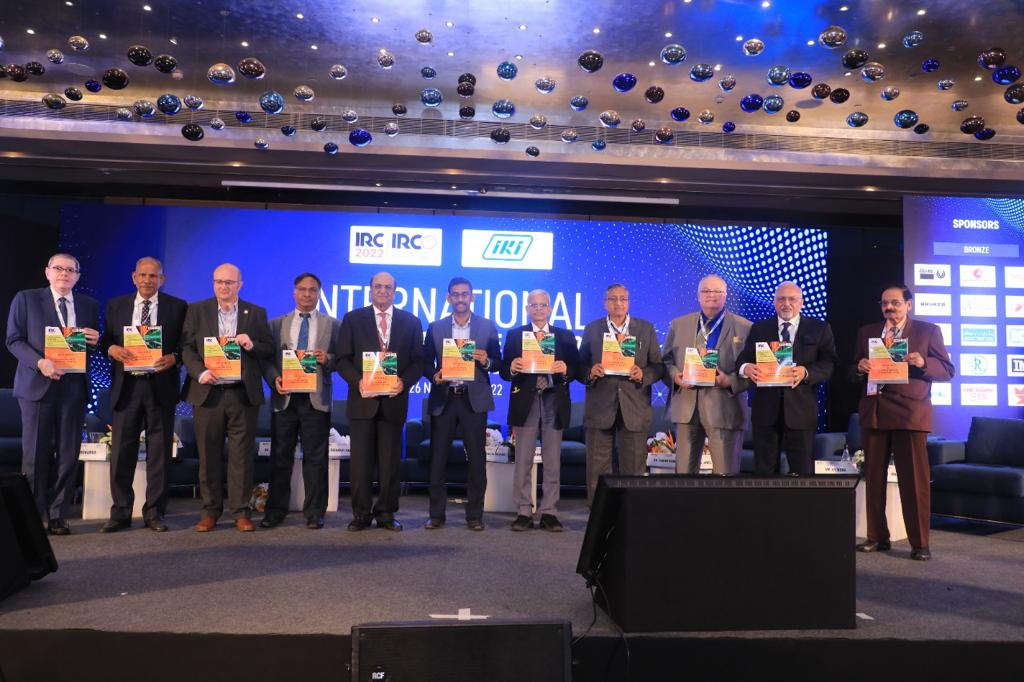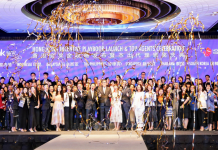ES. Please provide the readers with an insight into your early life and professional journey. What made you fall in love with this industry?”
Naveen Rizvi. In the vibrant tapestry of my early life and professional journey, my love for the dynamic domain of tourism, conference, and event management took root in the transformative years of 1996-97, witnessing the nascent development of the industry in India. The challenges and opportunities inherent in orchestrating seamless, memorable conferences and events captivated me from the outset. Armed with a post-graduation in Tourism Management, my early projects, including ‘Conference Management in the Indian Context’ and ‘Importance of Professional Conference Organizers in India,’ not only garnered attention but also propelled me into the industry with unwavering commitment.
Throughout the early stages of my career, I embraced diverse facets of the industry, from delving into sports tourism and handling logistics for monumental events like the Independence Cup to being an integral part of significant gatherings such as 1st Pravasi Bhartiya Diwas and FICCI Frames that I’ve witnessed evolve over time.
My journey into government projects has been a constant thread since my initial career days in the late 1990’s, allowing me to gain vast experience by working with different ministries and esteemed organizations like FICCI, CII, and later NASSCOM. This invaluable exposure has not only enriched my professional expertise but also fostered a deep understanding of the intricate workings of government affairs, contributing significantly to the success of the projects undertaken later.
My initial professional trajectory has also navigated the intricacies of major medical conferences across different fields such as Pharmacology, Cancer, Cardiology, Critical Care, Ophthalmology, Neurology, and more collaborating with esteemed institutions such as AIIMS and Apollo Hospitals. The ASICON conference in December 2000, where I led the team that managed logistics for over 5000 delegates at the Indira Gandhi Indoor Stadium in New Delhi, stands as a testament to my commitment to excellence.
In the realm of exhibitions, my noteworthy experiences in my initial career days include overseeing logistics for the Plastindia exhibition and conference in 2003 and ELECRAMA. My experience and expertise played a pivotal role in helping me secure the bid as the Official Games Travel Office during the 2010 Commonwealth Games and FIH Hockey World Cup 2010 in New Delhi.
The collaborative and strategic dimensions of the MICE industry have resonated deeply with my visionary spirit, shaping a professional journey marked by passion, dedication, and an enduring love for this dynamic and evolving field. As I reflect on my diverse experiences, I am inspired by the transformative power of events and conferences to bring people together, foster innovation, and create lasting memories. With a positive outlook, I eagerly anticipate the continued evolution of the industry and the exciting challenges and opportunities that lie ahead.

ES. The G20 enhanced the status of India as the premier destination for MICE events and created additional opportunities for the country to host similar events in the future, in retrospect what measures in your opinion should be taken to maintain the status?
Naveen Rizvi. The G20 Presidency indeed elevated India’s standing as a premier destination for MICE events, elevating its global standing and opening doors for future opportunities. To sustain this status, a multifaceted approach is crucial. Continued investment in state-of-the-art infrastructure, especially in Tier 2 cities, will ensure diverse and accessible venues. Strengthening government-industry partnerships for favorable policies and incentives can further attract global events. Harnessing the power of digital platforms and strategic marketing will sustain international interest. Fostering collaborations with allied sectors like hospitality and transportation is key for seamless event execution. Emphasizing sustainability practices aligns with global trends and enhances India’s appeal. Inclusivity, through affordability and skill development, ensures broader participation. Overall, maintaining premier status necessitates a concerted effort across infrastructure, policy, marketing, and collaborative partnerships to keep India at the forefront of the MICE industry. By strategically implementing these measures, India can not only maintain its status as a premier MICE destination but also further solidify its position as a dynamic and diverse host for international events.
ES. Kindly share your views on the uniqueness of SITE and why should one join the association. What does it have to offer to the industry and associates?
Naveen Rizvi. SITE, the Society of Incentive Travel Excellence, has been a vital part of my professional journey since 2009. The uniqueness of SITE lies in its unwavering commitment to excellence in incentive travel. Joining SITE is a game-changer for professionals in the incentive industry. It opens the door to incredible opportunities in incentive travel. By being part of SITE, one becomes connected to a global network that encourages teamwork and helps your business grow. You stay ahead of industry trends with ongoing learning and career development. In short, SITE is more than a group—it’s a dynamic system that propels professionals to new levels of success in the incentive travel field.
ES. It is no secret that the government has the vision to touch USD 56 billion forex, with the tourism as a major contributor by 2030, however lack of world class exhibition and conference infrastructure in the nation may become a hurdle. What is your take on that?
Naveen Rizvi. In my view, the government’s ambitious vision to achieve USD 56 billion in forex by 2030 through tourism is commendable. The MICE industry plays a pivotal role in contributing to the overall tourism sector, and having state-of-the-art facilities is instrumental in attracting international events and conferences in the country. The vision is well-supported by recent strides in expanding conference and convention infrastructure in the country such as the inauguration of two state-of-the-art convention centers, Yashobhoomi and Bharat Mandapam, in New Delhi, Jio Convention Centre in Mumbai and Maharaja Chhatrasal Convention Centre in Khajuraho which reflects a positive commitment to bridging the infrastructure gap. I appreciate these initiatives; however, there remains an opportunity to extend such developments to key Tier 2 cities as well. Collaborative efforts between the government and private sector, coupled with streamlined processes and incentives, could further accelerate the growth of world-class facilities nationwide, positioning India as a global MICE hub and ensuring the realization of our ambitious economic targets.
ES. With 20 years’ rich experience in the MICE Industry, what all transitions have you witnessed in the last two decades in terms of technology and marketing?
Naveen Rizvi. In my over two decades of experience in the industry, the technological landscape has undergone a remarkable evolution. We’ve traversed a transformative journey into the digital age which is quite fascinating and noteworthy. Initially, projectors were the primary tool for presentations, gradually making way for LED technology that revolutionized visual experiences. In the early years, delegate communication relied on fax machines, and it wasn’t until the late 1990’s that emails became prevalent. Telex was also utilized in the earlier stages of communication, reflecting the seismic shifts in technology that have shaped the conference and event industry over the past two decades. In the early 2000’s, the advent of online registration software marked a significant shift, streamlining processes and enhancing accessibility for event participants. The transition from traditional printed materials to the digital realm not only saved resources but also provided a more dynamic platform for conveying information. Overall, these technological advancements have not only enhanced the efficiency of event execution but have also significantly elevated the overall experience for participants.
ES. In your opinion, how has the year 2023 treated the industry businesswise and how progressive it was in terms of promotion?
Naveen Rizvi. From my perspective, the year 2023 has been exceptionally positive for our industry, showcasing a discernible upward trend. The successful execution of the G20 and SCO meetings and events in various destinations has been a major catalyst for this positive trajectory. Not only did it underscore our industry’s capability to handle high-profile conferences with world leaders, but it also positioned India prominently as a preferred destination on the global stage for meetings and events.
In particular, the hosting of the 141st International Olympic Committee (IOC) Session on 14th October 2023 at the Jio World Centre in Mumbai marked a monumental achievement. This IOC Session’s return to India after 40 years, with the last edition held in New Delhi in 1983, has significantly contributed to promoting India as a world-class conference destination. The praise garnered for the impeccable facilities, especially the Jio World Centre, further solidifies our country’s standing on the international stage.
Moreover, the inauguration of two new convention centers, Yashobhoomi and Bharat Mandapam, in New Delhi in 2023 has been a game-changer. These state-of-the-art facilities not only meet international standards but also instill confidence in event organizers. The industry stakeholders are optimistic about the increased potential for attracting more international conferences and events to India, thanks to these world-class venues.
Beyond the events themselves, it’s noteworthy that the government’s continuous efforts and initiatives in improving infrastructure and marketing are playing a pivotal role in promoting India as a premier destination for conferences and events. The commitment to developing state-of-the-art convention centers and the proactive marketing efforts signal a forward-looking approach that enhances India’s global standing in the MICE industry. With these positive developments, I am confident that the momentum gained in 2023 will further propel our industry’s growth and solidify India’s position as a top-tier conference destination.
ES. To what extent do you think that it is relevant for the incentive tourism industry to have good ties with cooperating allies like government, transportation, hospitality and how can the industry flourish more with their push and support?
Naveen Rizvi. From my perspective, in the incentive tourism industry, forging strong ties with allies such as the government, transportation, and hospitality sectors is not just beneficial but vital. Collaborating with the government ensures favorable policies and a supportive regulatory environment, facilitating the smooth execution of incentive programs. Government support can also be harnessed for marketing campaigns, leveraging the success of events like the G20 and SCO to attract more programs.
Building robust connections with the transportation sector is equally essential. This collaboration not only ensures efficient logistics but also broadens access to new destinations, making the incentive tourism landscape more diverse and appealing.
In the context of hotels and hospitality, these alliances play a crucial role in the success of incentive programs. The hotel industry contributes significantly by offering preferential rates and tailored services, providing participants with a comfortable and enriching experience. The opening of new hotels and hospitality services adds to the diversity and capacity, allowing for the successful handling of incentive programs with varying requirements and preferences.
Partnerships with the hospitality industry go beyond mere accommodation. They enable the creation of unique and memorable experiences for participants, making their stay not only comfortable but also culturally enriching. This collaboration, therefore, plays a pivotal role in positioning India as a premier incentive tourism destination, showcasing the nation’s rich culture and hospitality.
In essence, a synergistic relationship with these allies—government, transportation, and hospitality—is pivotal for the flourishing of the incentive tourism industry. The government’s support contributes to a conducive environment, the transportation sector enhances accessibility, and the hospitality industry adds the crucial element of comfort and unique experiences. Together, these alliances contribute to the overall growth of the industry, solidifying India’s reputation as an ideal incentive tourism destination.
ES. Please highlight ICE’s key services to clients
Naveen Rizvi. ICE stands out for its multifaceted services catering to diverse client needs. We offer a comprehensive suite of services, including production, design, and coordination for a diverse range of events. From conceptualizing and executing cultural extravaganzas to overseeing the technical and logistical aspects of large-scale productions, ICE ensures that each event is a seamless and memorable experience for clients.
We also specialize in crafting engaging incentive programs for Corporate Meetings & Incentives within India and overseas, offering a diverse range of experiences. The company’s expertise extends to a customer-centric approach in handling Conferences, Conventions, and Summits, covering delegate registrations, venue management, staff coordination, and gala dinners. Additionally, ICE offers proficiency in the virtual realm with Virtual and Hybrid Events catering to the modern business landscape.













